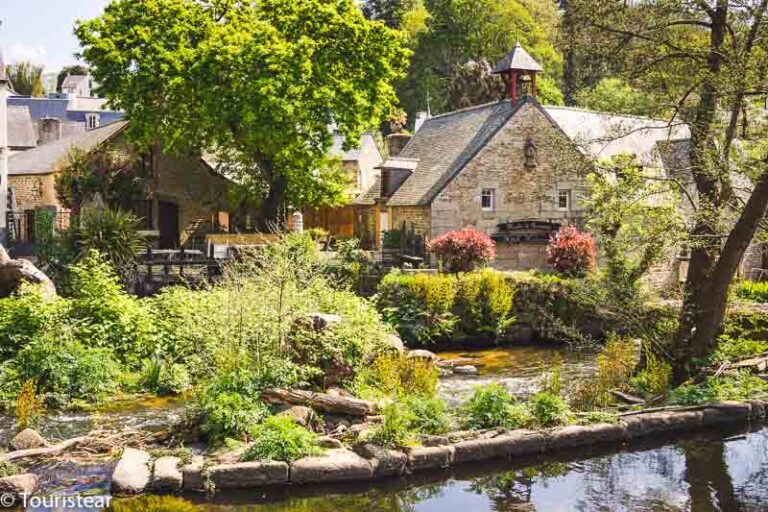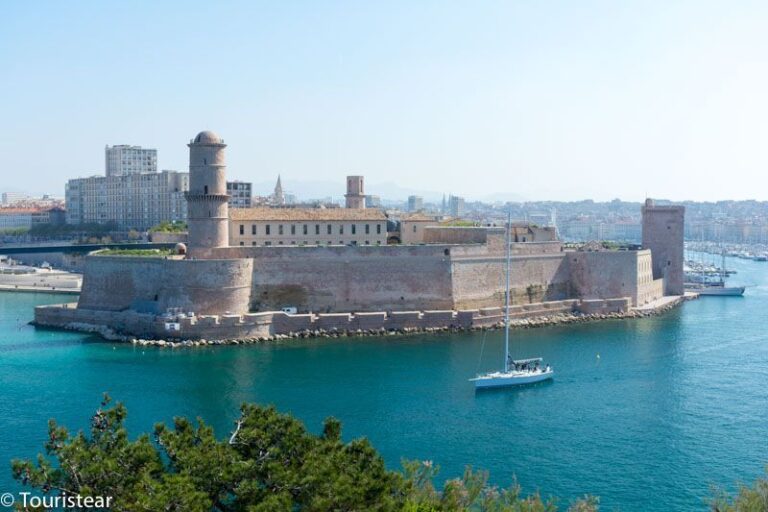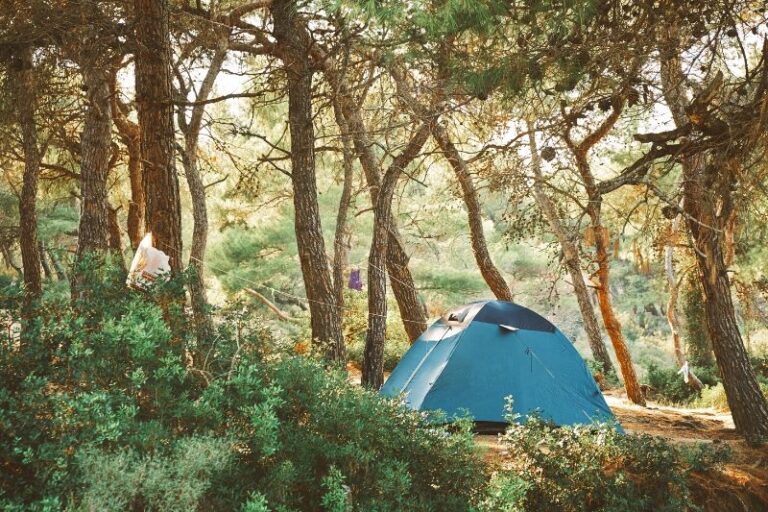Road Trip Itinerary Guide Dordogne – Périgord by Van or Car
I want to tell you about our road trip through the Dordogne – Périgord in a camper van in today’s post. A 7-day Dordogne Valley road trip we loved, and we’re sure you’ll love it too.
France is home to incredible areas, well-preserved medieval villages, and gastronomy that is a World Heritage.
In the Dordogne-Perigord area, we can find cities where, centuries ago, the troglodytes lived. Not to mention, it is a privileged destination to travel by camper van or motorhome with free and paid places to stay overnight.
In this post, you will find our road trip itinerary through the Dordogne-Périgord, and in another post, I will prepare a small practical guide to visiting the Dordogne and some facts that you have to know about the region for your trip. Let’s start!
You’ll like the post of the most beautiful villages of the Dordogne.
Itinerary to Visit the Dordogne – Périgord by van or car
This trip was made in the first week of June 2020. The limit to move around France more than 100 km from your home (we live in France) was allowed.
We made the trip in our camper van, which is perfect for making by car, staying in hotels or going to campsites.
As you can see, for the last two days, we have left places that are “on the way home,” but if you come from another country or by plane, you may have to adapt the itinerary.
7-Day Itinerary Dordogne Valley – Périgord Noir
- Day 1. Domme – Roque Gageac – Marqueyssac Gardens
- Day 2. Castelnaud la Chapelle – Beynac et Cazenac (Castle of Milandes)
- Day 3. Sarlat la Caneda
- Day 4. Puymartin Castle – Limeuil – Cloister de Cadouin
- Day 5. Belvés – Monpazier
- Day 6. Maison Forte de Reignac – La Roque St Christophe – St-Leon-sur-Vézére
- Day 7. Castle and village of Hautefort – St-Jean-de-Côle
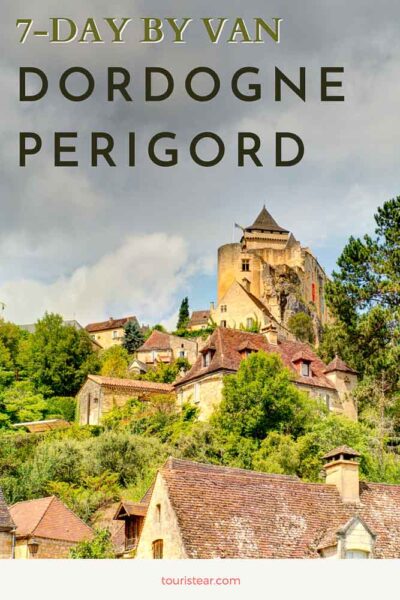
MAP
La Bastide de Domme
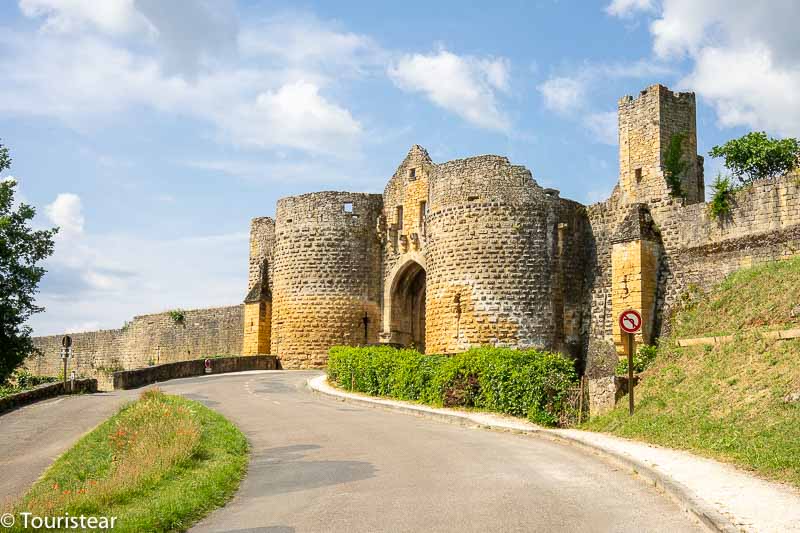
We start the road trip through the Dordogne-Perigord in the *Bastide de Domme, one of the most beautiful villages in the Dordogne and recognized as the “Most beautiful village in France.”
I’ll tell you what “Bastide” is at the end of the post.
Domme was a fortified city of the Périgord; we can reinforce this point by taking a look at its main door, the “Porte de Tours.”
Inside the “Bastide de Domme” you will find very well preserved medieval architecture and inside the Tourist office an entrance to the Grotto of Domme. A jewel of 450 meters with unique treasures.
Stroll through the village, walk through its streets, its gardens, the mill, its viewpoints… Unfortunately, the castle cannot be visited because it is private property.
Read the post with the most beautiful villages of the Dordogne-Perigord
Roque Gageac
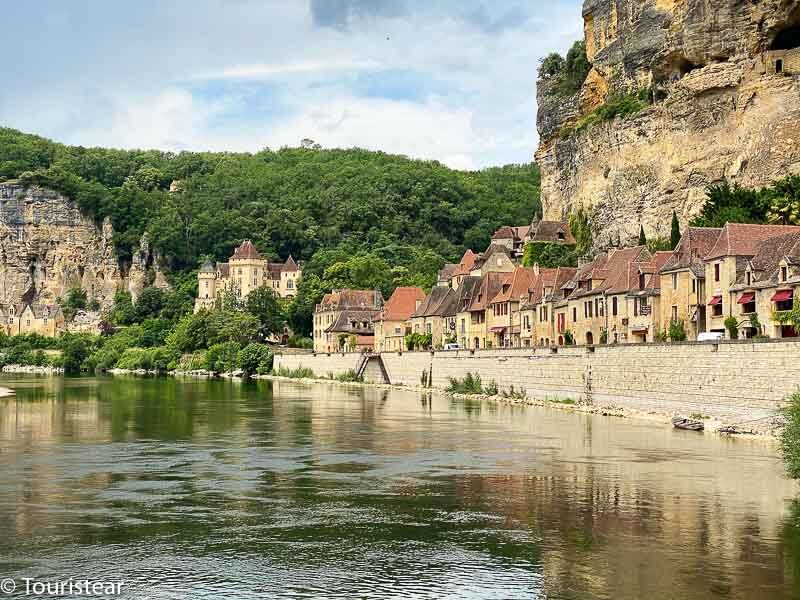
La Roque Gageac is one of the villages that I liked the most about this route; it was declared one of the most beautiful in France.
With its stone houses on the edge of the river, higher old cities carved into the rock, a castle, lots of green, and a fascinating river to take a photo of this place from the water.
Castelnaud la Chapelle
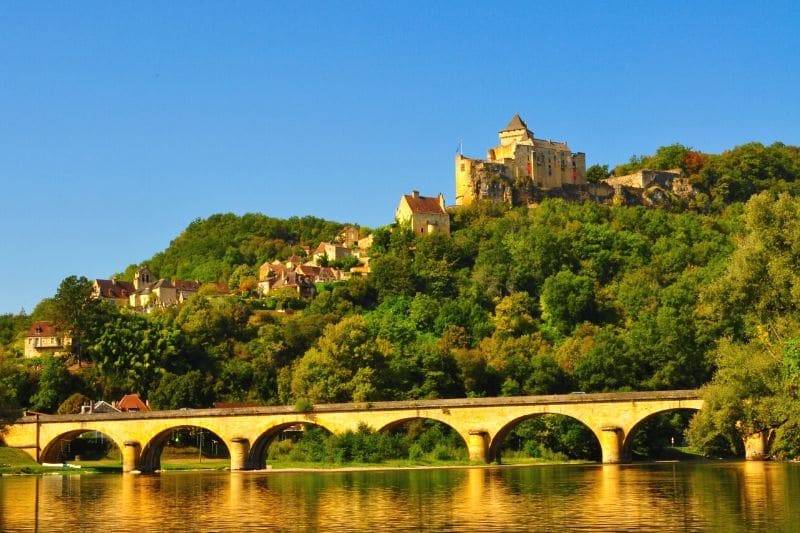
Castelnaud la Chapelle is another of the most beautiful villages in France. You can see how the castle dominates the area from the top of a rock. The village is super picturesque.
The castle was closed due to Covid-19 when we went. So, you can leave your comments at the end of the post with your experience.
Marqueyssac Hanging Gardens
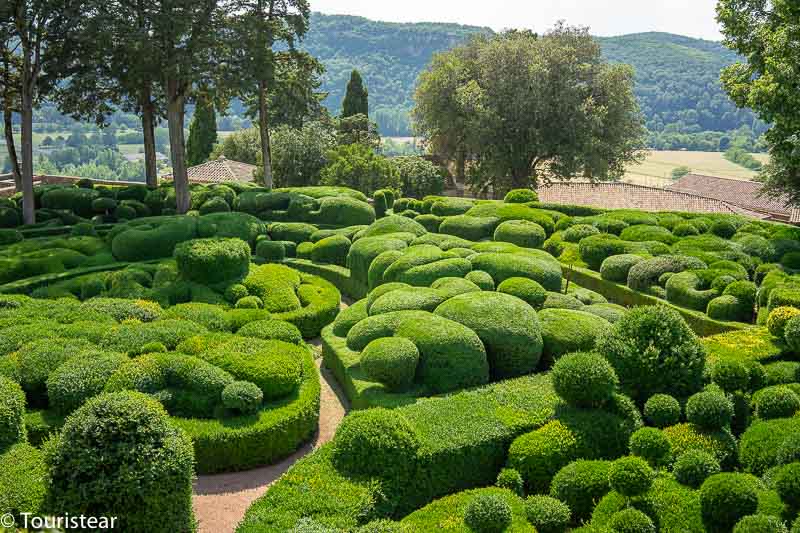
The Hanging Gardens of Marqueyssac, the viewpoint of the Dordogne, a must-see on your road trip through the Périgord.
Marqueyssac Castle Park is a private estate dating back to the 17th century. It has been declared in the French public interest and has been open to the public since 1997.
It is a wonderful place, with possibly the best views of the Dordogne.
I’m going to write you a post dedicated to these gardens because it has a very nice story and I’m sure you’ll like it.
Beynac et Cazenac
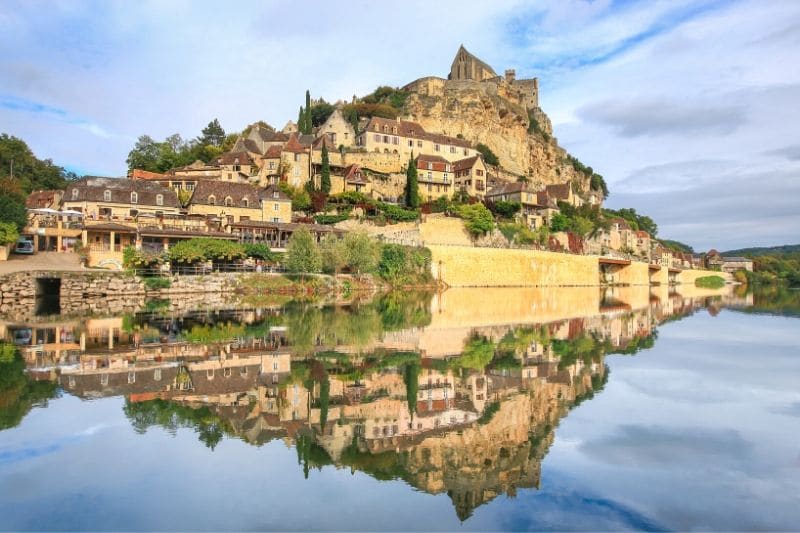
The best view of this medieval village is when you’re arriving. The stone houses on the edge of the river and the castle at the top will leave you speechless. This one and the Roque-Gageac are my favorites.
Here, the essential thing is to walk through the village, visit the Castle of Beynac and walk along the Dordogne River in “gabarre.” In addition, there are guided tours in the summer.
If you are in love with castles and their stories, come to the castle of Milandes. The Lord of Castelnaud built it to please his wife in 1489. But it is known worldwide thanks to Josephine Baker.
American by birth, French by marriage, received the Medal of the Legion of Honor in this castle.
She had an exciting life; I leave the castle page with her history (you can read it in English or French) to learn more.
- Read the post with the most beautiful villages of the Dordogne-Perigord
Sarlat la Caneda
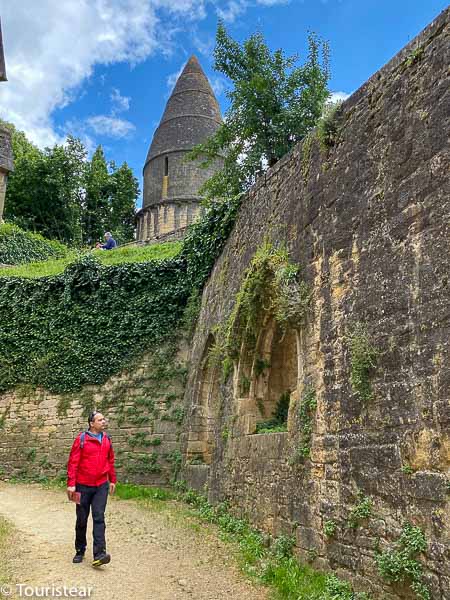
I don’t understand how this city wasn’t in our initial planning, but we posted a photo on Instagram of the Roque Gageac, and a follower recommended this place in the comments, and we went.
We were going well on time, because of the Covid-19 there were many closed places that we couldn’t visit. But thanks to that we could visit Sarlat, and the truth is we loved this place.
Sarlat needs a day to tour it, and if you can stay the night, it is recommended. I’m going to write a post dedicated to this city to expand the information.
Sarlat has uncertain origins, there are traces of occupation in the south of the city dating back to the Paleolithic, but tradition says that the city formed from the ninth century around a large Benedictine abbey, which is located at the same distance from Périgueux and Cahors.
Here you have to visit the Episcopal Palace, the Cathedral of Saint-Sacerdos, the Lantern of the Dead, the Présidial, the Town Hall, the Church of Sainte-Marie, and its imposing gates, the Hotel de Gisson.
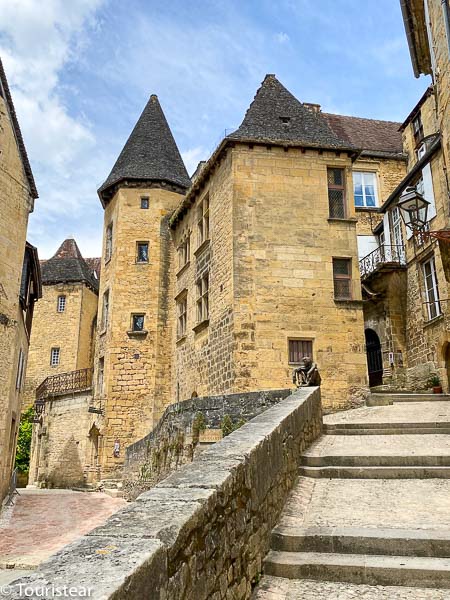
Let yourself be carried away by its streets and enjoy the history and architecture of this charming city.
Puymartin Castle
The Dordogne-Perigord is full of castles; you have to pay attention because you will find them among forests, around a bend, on top of a rock…
They are full of stories, such as Puymartin Castle, with the famous legend of Dame Blanche (the White Lady)
The castle began to be built in the 13th century, was surrounded by villages, and was on the border between France and England when the 100-year war began in the Périgord.
It was destroyed and ruined throughout the 100-year war. But, it was rebuilt, expanded, rebuilt again in the centuries to come, and we can visit it today.
Over five centuries, it belonged to the same family, although surnames have been changed to marriages.
The legend of the White Lady refers to Thérése de Saint-Clar, who was imprisoned in the castle’s north tower.
History says that in the 16th century, Thérése was surprised by her husband in her lover’s arms when he returned from the war. The jealous husband killed the lover and imprisoned his wife in the tower for 15 years.
Her prison door was clogged, and there was only one slit where she received the food. She dies in her prison, and legend says that at midnight, her ghost wanders the stairs and the castle rooms—the inhabitants of the castle claim to have seen it and some visitors.
Limeuil
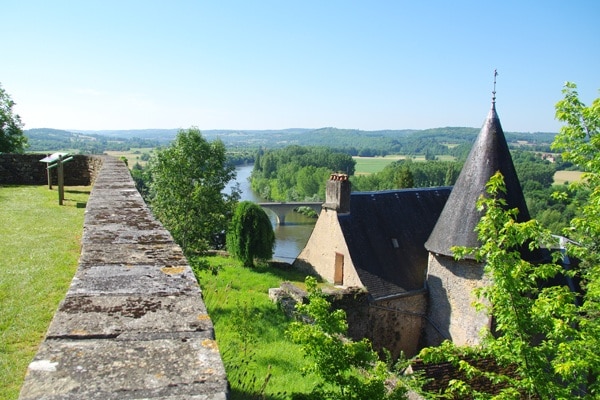
Limeuil is part of the most beautiful village in France since 1990 and has not lost its status. The truth, it is super beautiful. Here, the Vézére and the Dordogne River come together, which makes the landscape spectacular.
The most typical of this beautiful village is its panoramic gardens. They are located at the top of the village and have great views.
The city has origins in antiquity; it was one of the cradles of nascent humanity and was also a flourishing city until the end of the nineteenth century, thanks to its port and navigable rivers.
Cloister de Cadouin
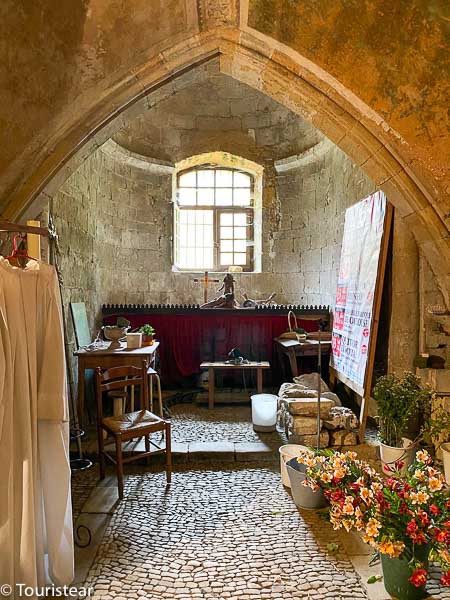
In Cadouin, a charming medieval village, you will find the Cadouin Cloister, a Gothic artwork declared a World Heritage Site by UNESCO.
Belvés
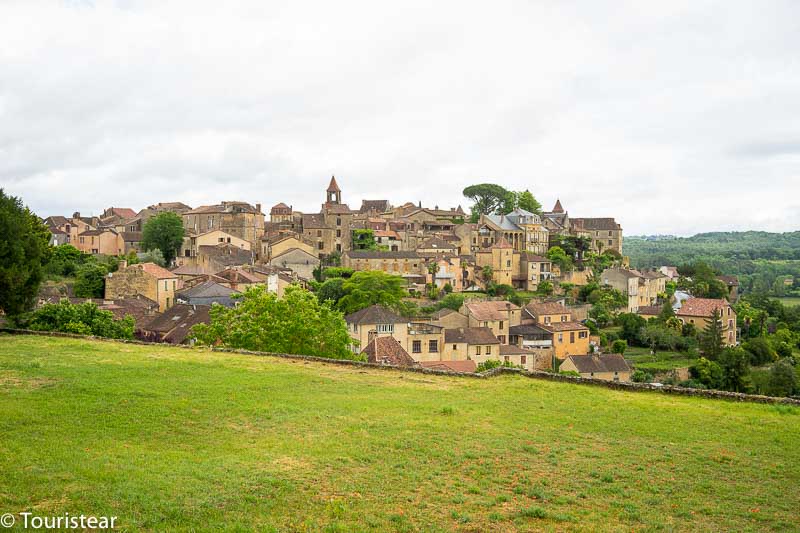
Belvés is one of the most beautiful villages in France and is one of the most beautiful in the Dordogne – Perigord. It is an ancient medieval city, which they have managed to preserve to this day.
It is located on top of a rocky promontory, ideal for defending against possible attacks.
The road to visit the village is very well signposted, with signs that explain what you are seeing.
Highlights include the market (Le Halle), the underground troglodyte city, the 14th-century castle, the Belfort Tower, among others.
Bastide de Monpazier
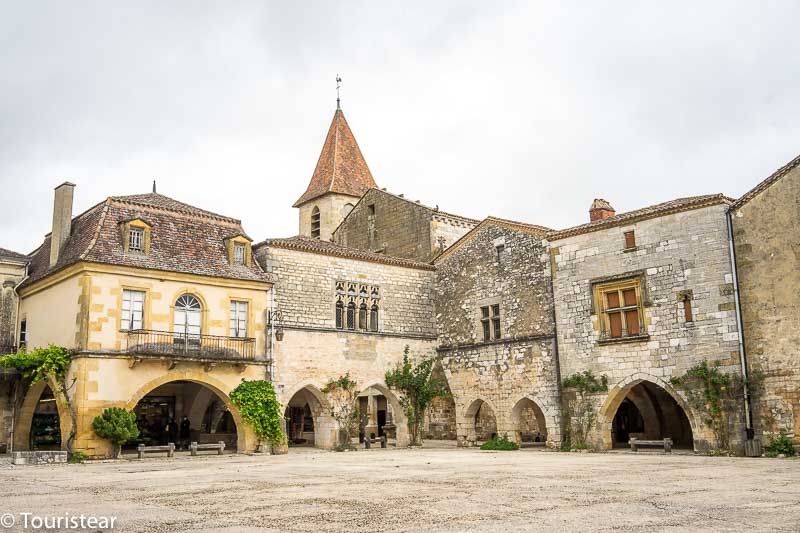
The gridded city of the Middle Ages. This city was founded in 1284 by King Edward I of England (yes, the Perigord was English, but that is the subject of another post) and has remained almost intact to this day.
It is the best-preserved in southwestern France.
The most surprising thing about this town is its perfect grid design. It is essential to reach the main square, tour the porticos with centuries-old arcades, and its market has existed for more than 700 years in the same place, every Thursday morning.
Visit the artisan and local produce shops, and get some gastronomic souvenirs.
Maison Forte de Reignac
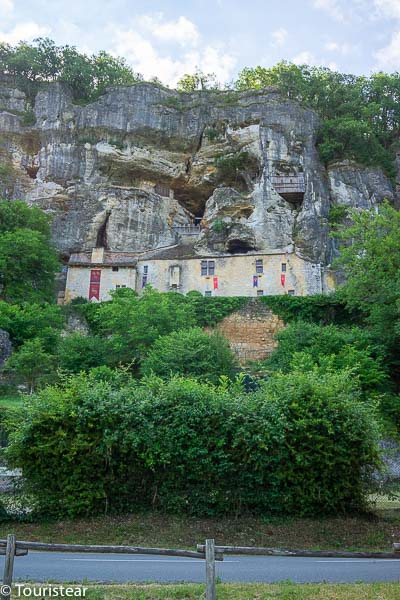
An amazing place that is much bigger than it looks. La Maison Forte de Reignac is a cliff castle, preserved in an exceptional and fully furnished state of period.
It is the only monument of its kind in France preserved completely intact.
La Maison Forte de Reignac is declared a historical monument and is a private property open to the public.
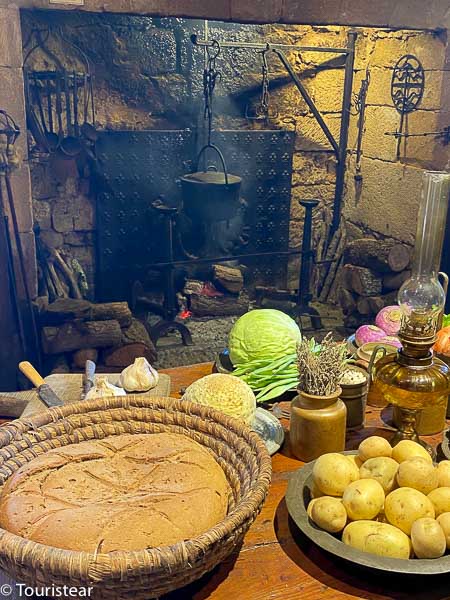
It is one of the strangest castles I have ever visited and an essential to understand what life was like in this region.
La Roque St Christophe
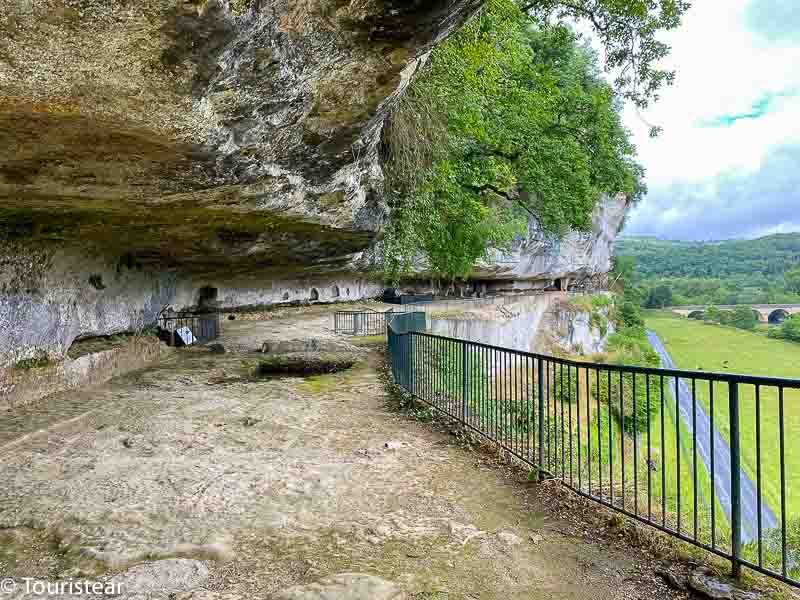
La Roque St Christophe is one of the must-see places to visit in the Dordogne-Périgord.
It is a place with thousands of years, where you can see a city – troglodyte fortress and an ancient medieval city, destroyed by the war of religions.
The cliff of Roque St Christophe stretches for one kilometer, bordered by the River Vezere and the road.
This cliff consists of 5 terraces, excavated from its origin by the erosion of the waters for 60 million years and by the action of ice in the glacial periods.
During the twentieth century, excavations were made that brought to light the different periods of occupation of this place since prehistory.
The first traces are from 50,000 years ago, where this cliff gave refuge to probably Neanderthal hunters and 25,000 years later to the man of Cromagnon.
Around 3000 BC, man became sedentary, and the Roque St Christophe is occupied uninterruptedly until the Middle Ages, having the capacity to house 1000 people. In 1588 this place was destroyed, a victim of the Wars of Religion.
St-Leon-sur-Vézere in Dordogne
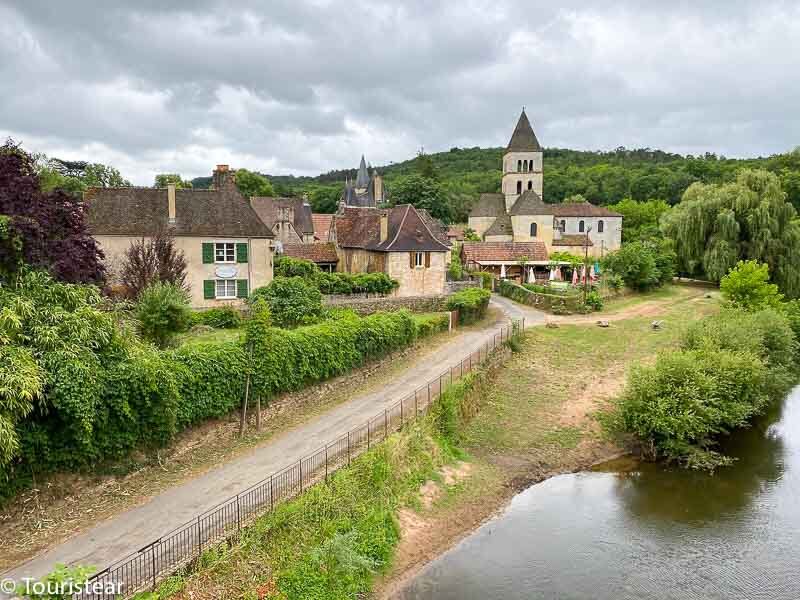
St-Léon-sur-Vézére is a small, super picturesque village that serves wonderfully prepared food typical from the Dordogne – Perigord.
It has a castle that we could not visit due to Covid-19. It is the castle of Clérans, of the sixteenth century, with a garden full of centuries-old trees; it looks like a fairytale castle.
You have to visit without a doubt the Romanesque church of the 12th century on the banks of the Vézére River. It is listed as a Historical Monument and is the Jewel of Saint Leon.
Hautefort Castle and Village
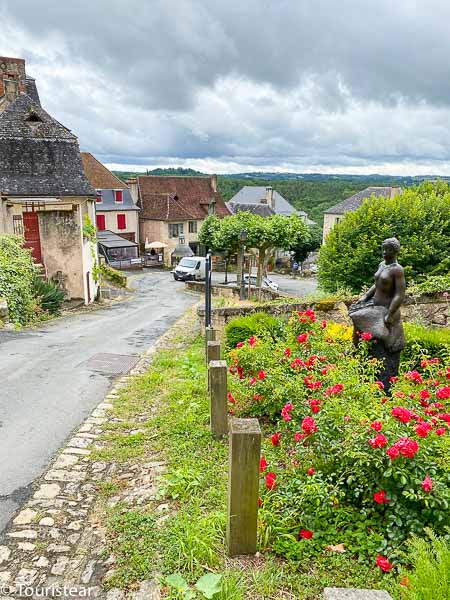
The Castle of Hautefort is one of the most visited in the Dordogne region. It is a rare example of the classic architecture of Perigord.
Its decorations respect the fashions of the seventeenth and eighteenth centuries.
In the nineteenth century, the Count of Choulot made a design of the gardens in a French style. In addition, he created 30 hectares of an English park overlooking the countryside and the surrounding villages.
In summer, there are highly recommended night tours.
St-Jean-de-Côle
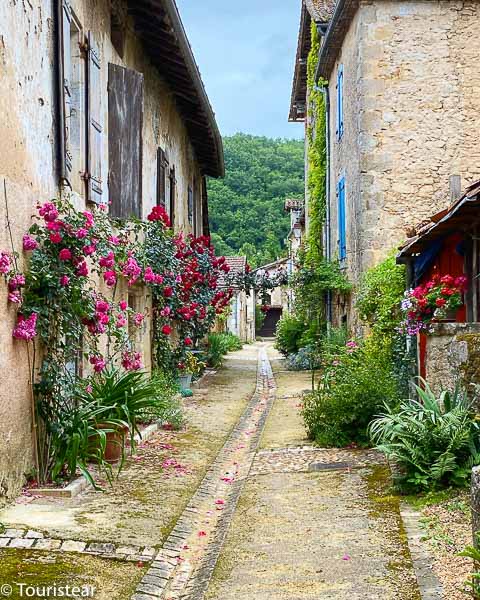
The village, despite its size, has it all: a castle from the fifteenth to seventeenth centuries called the Castle of Marthonie, a Roman-Byzantine church of the twelfth century, a priory of the sixteenth and seventeenth centuries that is now a restaurant, and the old bridge of the fifteenth century.
Strolling through its streets in spring is a delight for the senses, as you can enjoy the aromas of its flower-filled streets.
In May, they have a celebration called “Les Floralies” and guided tours with audio guides in Spanish, English, and French.
We couldn’t visit the castle; it was closed by the coronavirus.
*What is a Bastide?
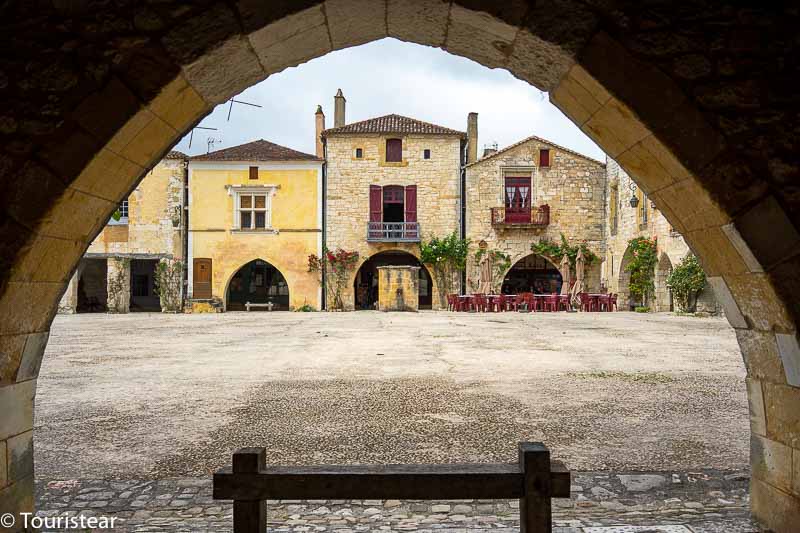
In French, a “Bastide” can be translated as “country house,” but we would not correctly define this type of village.
A bastide is a type of village, an agglomeration designed for commerce, to have the market in the city’s heart.
Several of these markets are still held on the same day as specified in 14th-century texts (Tuesday in Nay, Wednesday in Gan, and Navarrenx are examples).
This type of plan was adopted in 1250 when trade in this region was booming.
The bastides were created by the kings and main lords to demonstrate their power by populating agricultural areas. Because of that, they expected the inhabitants of these new populations to pay them the corresponding taxes.
But what they did was ask by contract to build their houses with the same dimensions and for everyone to pay the same taxes. So it was like a little revolution.
The bastide creation plan was adapted for trade. The squares where the market takes place have arcades (covered passageways) to protect the goods.
The church is built outside the square; a clear example is Monpazier.
The bastides were very modern for their time:
- They put the commercial function in the heart of the city
- Are administered by civil society
- Taxes are streamlined and create a legal framework: the tax is paid in cash and calculated for each installed family, it is an ancestor of the current taxes that are paid per household.
- They are built together to save space.
For those Traveling by Van in Perigord

Traveling by campervan or motorhome is very easy around the Dordogne – Perigord. In virtually all towns and cities, you will find areas for RVs or vans or “camping cars.”
There are areas attached to campsites where you can use the campsite pool, and there are campsites from normal to very good with 5 stars.
We spent a night at the campsite Le Paradis, where we were the first customers after the Covid (and the only ones), and they charged us only 10 euros. But it’s a 5-star campsite, so the normal price is higher.
There are free and paid areas that you can find in the Park4night app, or by looking at the signs, you’ll see that there are many. Prices are around 10 euros with all services (light and water).
There are pay areas without electricity for about 6 € / night, with water to recharge and empty gray and black water, and there are free areas where you pay for the water you use and empty the potty.
Actually, the potty can be emptied, but you have to pay for water to clear it up.
For Those Traveling by Car
There are accommodations in all the towns and cities we have visited. However, we didn’t use them because we were traveling by van.
So here’s our Booking link for you to take a look at and book the ones that best fit your travel style.
Plan Your Trip to Dordogne – Périgord
- The most beautiful villages of the Dordogne
- What to see in Bordeaux (it’s a good gateway)
- Tips for van travel
- What to take on a van trip
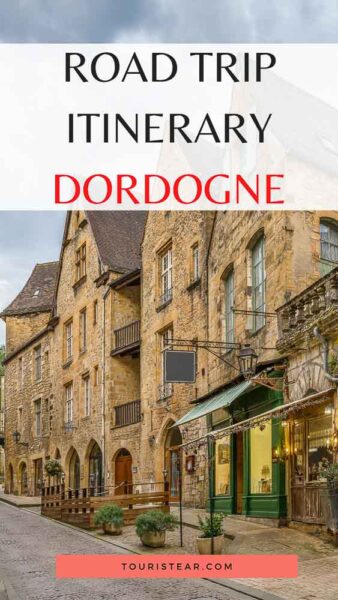
Last Updated on 5 October, 2023 by Veronica
Disclosure: Some of the links on this post are affiliate links, meaning at no additional cost to you, I may earn a small commission if you click through and make a purchase.
Author: Veronica
Vero, a seasoned traveler, has explored 25 countries and lived in five, gaining a rich perspective and fostering an infectious passion for travel. With a heart full of wanderlust, Vero uncovers the world’s hidden gems and shares insights, tips, and planning advice to inspire and assist fellow adventurers. Join Vero and let the shared passion for travel create unforgettable memories.








